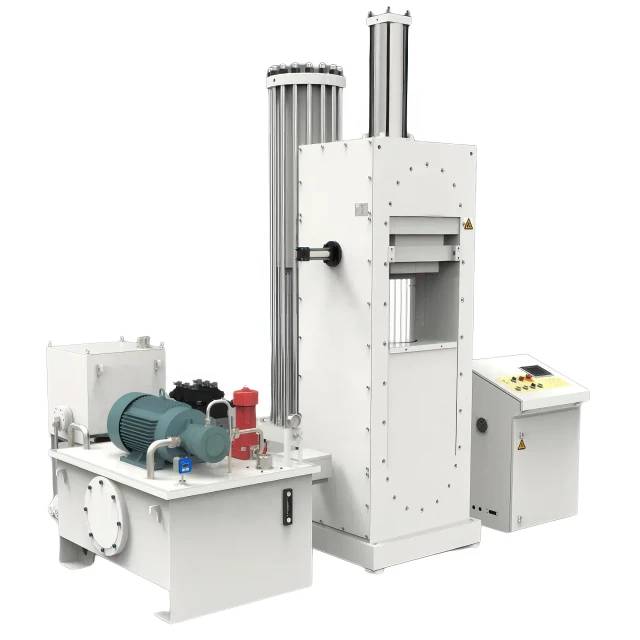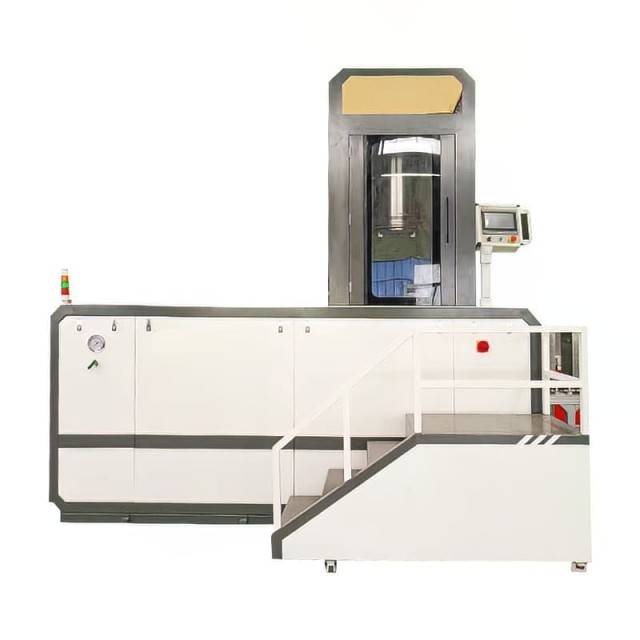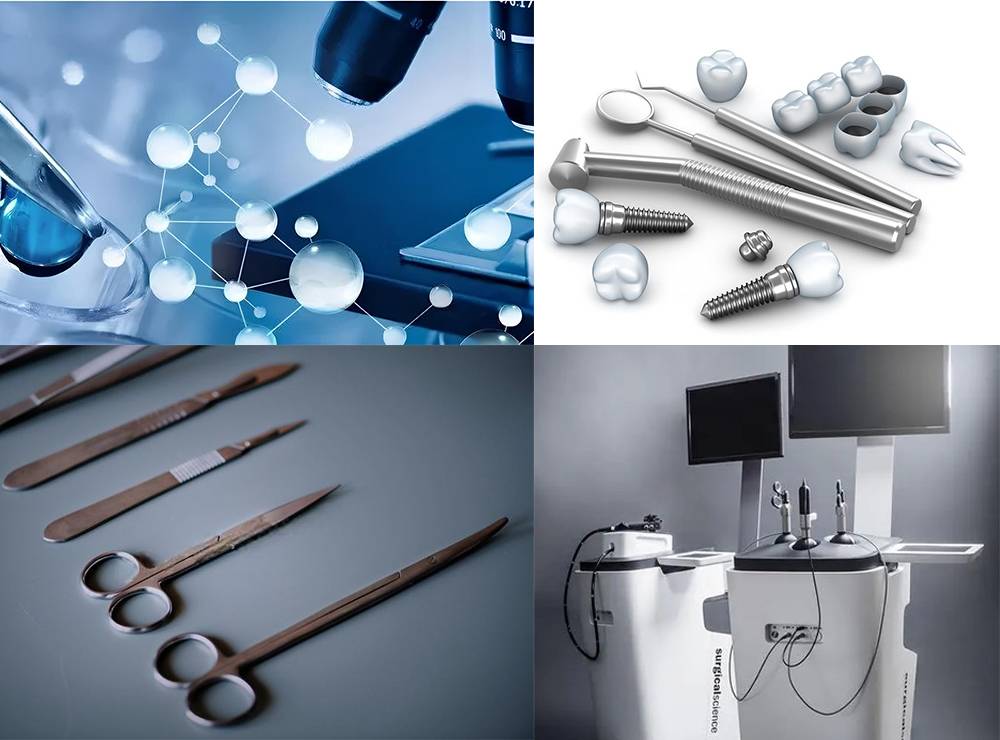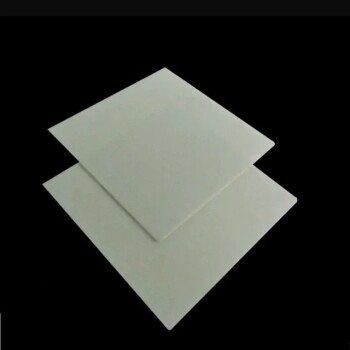Introduction: Explanation of Cold Isostatic Pressing
Isostatic Press - KinTek Solution (kindle-tech.com)This results in a uniform distribution of pressure, which allows for compaction of complex shapes without deformation. Unlike other powder compaction methods, CIP can be done at ambient temperatures, making it ideal for temperature-sensitive materials such as ceramics and composites. The use of CIP has expanded into several industries, including aerospace, medical, and energy, making it a game changer in material science.
Table of Contents
- Introduction: Explanation of Cold Isostatic Pressing
- The Isostatic Process: Uniformity without Geometrical Limitations
- Cold Isostatic Pressing: Compacting Powder at Ambient Temperature
- Advantages of the Isostatic Process: Consistent Shrinkage and Low Internal Stresses
- Disadvantages of Isostatic Pressing: Lower Accuracy and Production Rates
- Range of Ceramic Products Produced by Isostatic Process
- Comparison with Other Production Methods: Die Compaction, Extrusion, Slip Casting, and Injection Molding
- Applications for Cold Isostatic Pressing: Consolidation of Ceramic Powders, Compressing of Graphite, Refractories, and Electrical Insulators, and Other Fine Ceramics for Dental and Medical Applications
- Conclusion: Cold Isostatic Pressing as a Game Changer in Material Science
The Isostatic Process: Uniformity without Geometrical Limitations
Isostatic pressing is a powder metallurgy process that applies uniform pressure in all directions on a powder compact, achieving maximum uniformity of density and microstructure without the geometrical limitations of uniaxial pressing. The process is used for a range of materials, including ceramics, metals, composites, plastics, and carbon.

Cold Isostatic Pressing (CIP)
Cold isostatic pressing (CIP) is used to consolidate ceramic or refractory powders loaded into elastomeric bags. The material is placed in a flexible mold which is then immersed in a pressurized fluid. The pressure is evenly distributed throughout the mold, resulting in uniform compaction of the material. CIP is applied to compact green parts at ambient temperatures, making it suitable for temperature-sensitive materials such as ceramics, metal powders, etc.
Warm Isostatic Pressing (WIP)
Warm isostatic pressing (WIP) differs from CIP only in that shapes are pressed at warm temperature to about 100°C. WIP works at medium temperature and is suitable for materials with certain requirements on temperature, such as plastics, rubber, etc.
Hot Isostatic Pressing (HIP)
Hot isostatic pressing (HIP) involves both temperature and pressure applied simultaneously to obtain fully dense parts (to 100% theoretical density), and is used mainly for engineered ceramics requiring optimum properties for high-performance applications. The working temperature of HIP is high, making it suitable for materials with high-temperature requirements, such as metals and alloys.
Isostatic pressing applies a uniform, equal force over the entire product, regardless of shape or size. It thus offers unique benefits for ceramic and refractory applications. The ability to form product shapes to precise tolerances (reducing costly machining) has been a major driving force for its commercial development.
Powder is compacted with the same pressure in all directions, and, since no lubricant is needed, high and uniform density can be achieved. The process removes many of the constraints that limit the geometry of parts compacted unidirectionally in rigid dies. It is applicable to difficult-to-compact and expensive materials such as superalloys, titanium, tool steels, stainless steel, and beryllium, with material utilization that is highly efficient.
Isostatic presses are used for compressing pharmaceutical particles and raw material into predetermined shapes. The use of this pressurizing system ensures a uniform compaction pressure throughout the powder mass and a homogeneous density distribution in the final product. It is one of the most widely used pharmaceutical processing machines.
In conclusion, isostatic pressing is a reliable and efficient method for producing high-quality materials with consistent properties, making it a popular choice among researchers and manufacturers alike. The isostatic process enables the production of various types of materials from powder compacts by reducing the porosity of powder mixture. The process offers several advantages, including increased densification, improved mechanical properties, and higher purity of materials. As the demand for high-performance materials continues to grow, isostatic pressing technology is expected to play an increasingly important role in the field of material science.

Cold Isostatic Pressing: Compacting Powder at Ambient Temperature
Cold Isostatic Pressing (CIP) is a process that involves compacting powder at ambient temperature by applying uniform pressure to the powder in a liquid medium. The process allows for the production of materials with extremely high densities, uniform microstructures, and improved mechanical properties.
The CIP Process
The CIP process involves placing a dry or semi-dry powder in an elastomeric container that is submerged in a pressurized liquid. The powder is then subjected to equal pressure from all directions, which compacts the powder into a solid homogeneous mass. The use of an elastomeric container ensures that even complex shapes can be produced with high precision.
Advantages of CIP
The CIP process has several advantages over traditional manufacturing methods. For one, it produces materials with extremely high densities, uniform microstructures, and improved mechanical properties. The process can also be used to produce complex shapes with high precision. Additionally, CIP reduces waste and energy consumption compared to traditional manufacturing methods.
Materials Produced by CIP
CIP has revolutionized the manufacturing of high-performance materials such as ceramics, metals, and composites. The range of ceramic products produced by the isostatic process is large and includes balls, tubes, rods, nozzles, fuse tubes, teeming tubes, lighting tubes, grinding wheels, sodium-sulfur battery electrolyte, spark plug insulators, sewer pipes, dinnerware, crucibles, oxygen sensors, central heating water pump shafts, and rocket nose cones.
Cold Isostatic Pressing vs. Hot Isostatic Pressing
Cold isostatic pressing (CIP) is used to compact green parts at ambient temperatures. Hot isostatic pressing (HIP), on the other hand, is used to fully consolidate parts at elevated temperatures by solid-state diffusion. HIP can also be used to eliminate residual porosity from a sintered PM part.
Conclusion
In summary, Cold Isostatic Pressing (CIP) is a game-changer in material science. It offers a new way to produce materials with exceptional properties that were once impossible to achieve using traditional manufacturing methods. The use of CIP is expected to grow in popularity in the coming years as more industries realize its potential for producing high-performance materials.
Advantages of the Isostatic Process: Consistent Shrinkage and Low Internal Stresses
Consistent Shrinkage
Cold Isostatic Pressing (CIP) has revolutionized the field of material science by offering unique advantages over other pressing methods. The CIP process subjects a material to high pressure from all directions, resulting in consistent shrinkage. This process is particularly useful for producing complicated shapes and parts that require uniform density and high strength. The consistent shrinkage produced by CIP is a major advantage over other pressing methods that may produce uneven shrinkage, leading to defects in the finished product.
Low Internal Stresses
The CIP process is also known for producing low internal stresses in the finished product. This is because the pressure is applied uniformly from all directions, resulting in a more even distribution of stress throughout the material. This low internal stress makes it an ideal method for producing parts that require high reliability and durability. The aerospace, automotive, and medical industries are just a few examples of where high-performance materials are in high demand. The low internal stresses produced by CIP make it an ideal method for producing parts that require high reliability and durability.
Superior Mechanical Properties
In addition to consistent shrinkage and low internal stresses, the CIP process is also known to provide superior mechanical properties to materials when compared to traditional pressing methods. The uniform pressure applied from all directions results in a more even distribution of the material's particles, leading to a stronger and more durable finished product. This is especially important in industries such as aerospace and automotive, where high-performance materials are required to withstand extreme conditions.
Minimal Waste Material
The CIP process is highly efficient and allows for the production of complex parts with minimal waste material. This is because the pressure is applied uniformly from all directions, resulting in a more even distribution of the material's particles, leading to a stronger and more durable finished product. This not only saves on material costs but also reduces the environmental impact of manufacturing by minimizing waste.
Versatility
The CIP process is also very versatile and can be used with a wide range of materials, including metals, ceramics, and composites. This makes it an ideal method for producing a variety of parts for different industries. The ability to use the CIP process with a wide range of materials is due to its ability to apply pressure uniformly from all directions.
In conclusion, Cold Isostatic Pressing is a valuable technique that offers unique advantages over other pressing methods. The consistent shrinkage and low internal stresses produced by the process make it an ideal method for producing parts that require high reliability and durability. The CIP process is also highly efficient, produces minimal waste material, and is versatile enough to be used with a wide range of materials.
Disadvantages of Isostatic Pressing: Lower Accuracy and Production Rates
Isostatic pressing is a versatile method for producing high-quality materials, but it does have some drawbacks. One of the main disadvantages of isostatic pressing is that it can have lower accuracy and production rates compared to other pressing methods.
Longer Time Required for Uniformity
Isostatic pressing requires a longer time to complete due to the need for constant pressure adjustments to achieve uniformity. The process involves placing a material in a pressurized, liquid-filled chamber, which applies an equal amount of pressure on all sides. This results in a uniform distribution of pressure throughout the material, which helps to eliminate any defects or weak spots. However, the need for constant pressure adjustments to maintain uniformity can result in longer processing times.
Expensive Equipment
Additionally, the equipment used in isostatic pressing can be more expensive and difficult to operate, which can increase production costs. The process requires specialized equipment, including a pressurized chamber and a flexible mold to encase the material. The use of expensive equipment can increase production costs, making isostatic pressing more expensive than other pressing techniques.
Not Suitable for Complex Shapes
Isostatic pressing is not suitable for producing complex shapes. The process involves compacting powders by enclosing them in a flexible mold, which is then placed in a pressurized chamber. The pressure is applied uniformly to the mold, compressing the powder into a solid mass. However, the use of a flexible mold means that isostatic pressing is not able to provide green bodies with the accurate dimensions that uniaxial pressing does. This means that isostatic pressing is not suitable for producing complex shapes that require precise dimensions.
Despite these drawbacks, isostatic pressing remains a highly effective method for producing high-quality, high-strength materials that are used in a wide range of applications, including aerospace, automotive, and medical devices. As material science continues to advance, it is likely that new and improved versions of isostatic pressing will be developed, further expanding its potential uses and benefits.
Range of Ceramic Products Produced by Isostatic Process
Cold Isostatic Pressing (CIP) is a cost-effective and versatile technique for producing high-density ceramic components with improved mechanical properties. The range of ceramic products produced by CIP is vast, and the technique is ideal for producing complex shapes with intricate internal structures.

Turbine Blades and Bearings
One of the common applications of CIP is the production of turbine blades and bearings. The CIP process allows the production of intricate and complex shapes with uniform density and mechanical properties throughout the entire product. Turbine blades and bearings produced with the CIP process are highly durable and offer excellent performance.
Medical Implants and Dental Restorations
CIP is also used in the production of medical implants and dental restorations. The CIP process allows for the production of intricate and custom-designed implants and restorations that offer better fit and functionality. CIP-produced implants and restorations have high density and mechanical properties, making them highly durable and long-lasting.
Refractory Materials and Electrical Insulators
CIP is also commonly used in the production of refractory materials and electrical insulators. The CIP process allows for the production of highly dense and uniform materials that offer excellent thermal and electrical insulation properties. Refractory materials and electrical insulators produced with the CIP process are highly reliable and long-lasting.
Sputtering Targets and Valve Components
The technology is expanding into new applications such as the compression of sputtering targets, the coating of valve components used to reduce cylinder wear in engines, telecommunications, electronics, aerospace, and automotive applications. CIP-produced sputtering targets and valve components offer excellent performance and durability, making them highly reliable and cost-effective.
Other Fine Ceramics
CIP is used in the production of a wide range of fine ceramics, including silicon nitride, silicon carbide, boron nitride, boron carbide, titanium boride, spinel, and others. CIP-produced fine ceramics offer excellent mechanical, thermal, and electrical properties, making them highly suitable for a wide range of applications.
In conclusion, Cold Isostatic Pressing (CIP) is a versatile and cost-effective technique for producing a wide range of ceramic products with improved mechanical properties. The CIP process allows for the production of complex shapes with intricate internal structures, making it ideal for a wide range of applications, including turbine blades and bearings, medical implants and dental restorations, refractory materials and electrical insulators, sputtering targets and valve components, and other fine ceramics.
Comparison with Other Production Methods: Die Compaction, Extrusion, Slip Casting, and Injection Molding
Die compaction, extrusion, slip casting, and injection molding are some of the commonly used production methods in the industry. However, when compared to cold isostatic pressing (CIP), they have certain limitations.
Die Compaction
Die compaction is a popular method for producing complex shapes. However, it cannot produce uniform density in the material. This is because of the die-wall friction, which exerts a major influence on the density distribution of cold-pressed parts, and is absent in CIP. As a result, much more uniform densities are obtained in CIP.
Extrusion
Extrusion is limited to producing long shapes, and it is not ideal for producing small parts. On the other hand, CIP can produce high-density materials of any shape and size, making it a versatile method for material production.
Slip Casting
Slip casting is a low-cost method but is not suitable for producing high-density materials. In contrast, CIP can produce high-density materials with consistent quality, regardless of the shape or size of the material.
Injection Molding
Injection molding is an expensive method that can produce high-quality parts. However, it is not ideal for producing large and complex shapes. On the other hand, CIP can be used to compact more complex shapes than possible with uniaxial pressing. Additionally, the elimination of die-wall lubricants in CIP permits higher pressed densities and eliminates problems associated with lubricant removal prior to or during final sintering.
In conclusion, while die compaction, extrusion, slip casting, and injection molding have their own advantages, CIP stands out as a superior choice for producing high-density materials with consistent quality, regardless of the shape or size of the material.
Applications for Cold Isostatic Pressing: Consolidation of Ceramic Powders, Compressing of Graphite, Refractories, and Electrical Insulators, and Other Fine Ceramics for Dental and Medical Applications
Cold Isostatic Pressing (CIP) is a process that applies uniform pressure to an object from all sides using a liquid medium, typically water, at room temperature. The CIP technique is widely used in material science for the consolidation of ceramic powders, compressing of graphite, refractories, and electrical insulators, and other fine ceramics for dental and medical applications. This section will explore the applications of CIP in detail.

Consolidation of Ceramic Powders
CIP has become a game-changer in the ceramic industry as it is used to increase the density of ceramic powders and reduce their porosity, which results in improved mechanical properties such as strength and hardness. CIP is used to produce materials that would be difficult to make by other techniques. Some of the products made using CIP in the ceramic industry include refractory nozzles, blocks, and crucibles; cemented carbides, isotropic graphite, ceramic insulators, tubes for special chemical applications, ferrites, metal filters, preforms, and plastic tubes and rods.
Compressing of Graphite
CIP is also used to compress graphite. Graphite is a widely used material in the electronics industry due to its excellent electrical and thermal conductivity. CIP is used to consolidate graphite powder into a dense, uniform block with improved strength, density, and electrical conductivity.
Refractories
Refractories are materials that can withstand high temperatures without melting or deforming. They are used in applications such as furnaces, kilns, and incinerators. CIP is used to produce refractory materials such as crucibles, nozzles, and other shapes that can withstand high temperatures. The CIP process produces refractories with uniform density, which leads to a reduction of internal stresses, eliminating cracks, strains, and laminations.
Electrical Insulators
CIP is used to produce electrical insulators that are crucial for successful implantation in the production of dental and medical implants. The uniformity and density of the material produced by CIP are essential for the success of the implantation process. The process produces insulators with improved mechanical properties such as strength and hardness.
Other Fine Ceramics for Dental and Medical Applications
CIP is also used to produce other fine ceramics used in dental and medical applications. These ceramics have unique properties such as biocompatibility, bioactivity, and radiopacity. CIP is used to produce ceramics such as implants, dental bridges, and other dental and medical devices.
In conclusion, Cold Isostatic Pressing (CIP) has revolutionized the way materials are produced and used. It is an essential tool for material scientists and engineers who are constantly seeking to develop new and improved materials for a wide range of applications. The applications of CIP in material science are diverse, and its unique ability to produce highly dense and uniform materials with excellent mechanical properties has made it a game-changer in the field of material science.
Conclusion: Cold Isostatic Pressing as a Game Changer in Material Science
In conclusion, Cold Isostatic Pressing (CIP) is a game-changer in material science, providing a unique method for the consolidation of ceramic powders, compressing of graphite, refractories, and electrical insulators, and other fine ceramics for dental and medical applications. CIP technology offers uniformity without geometrical limitations, resulting in consistent shrinkage and low internal stresses. Although it has lower accuracy and production rates compared to other production methods such as die compaction, extrusion, slip casting, and injection molding, CIP offers advantages that make it an attractive option for certain applications. With the expansion of CIP technology into new applications, we can expect to see even greater advancements in material science in the future.
Related Products
- Cold Isostatic Pressing Machine CIP for Small Workpiece Production 400Mpa
- Electric Lab Cold Isostatic Press CIP Machine for Cold Isostatic Pressing
- Manual Cold Isostatic Pressing Machine CIP Pellet Press
- Warm Isostatic Press WIP Workstation 300Mpa for High Pressure Applications
- Warm Isostatic Press for Solid State Battery Research
Related Articles
- What is Isostatic Pressing Machine
- Isostatic Pressing Technology: Principles, Classification, and Applications
- Understanding the Isostatic Pressing Process and its Types
- Isostatic Pressing Technology: Revolutionizing Ceramic Material Densification
- Comprehensive Guide to Isostatic Pressing: Types, Processes, and Features(3)

















